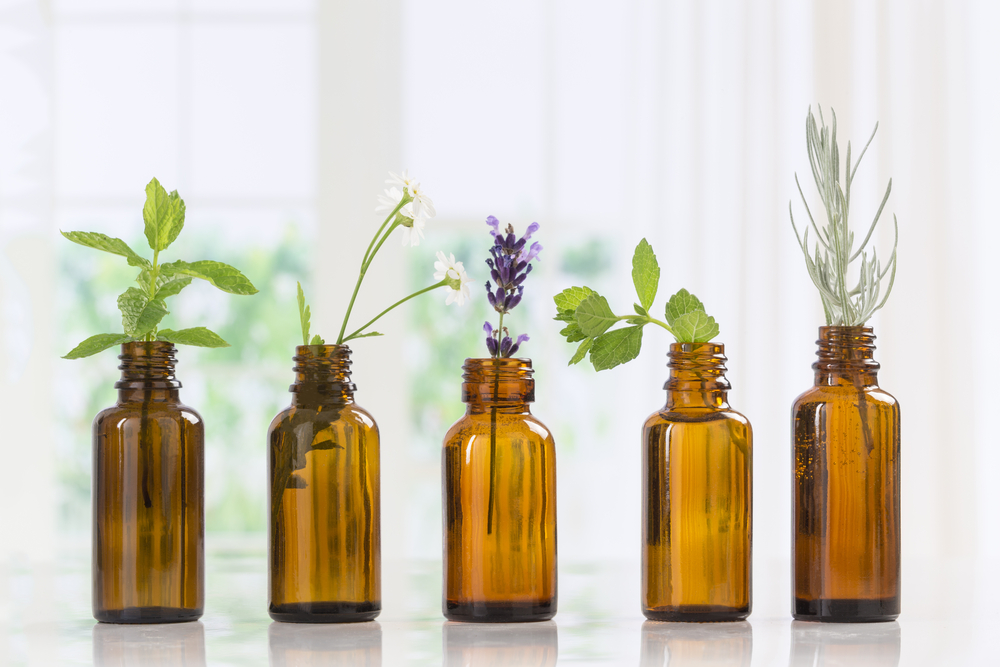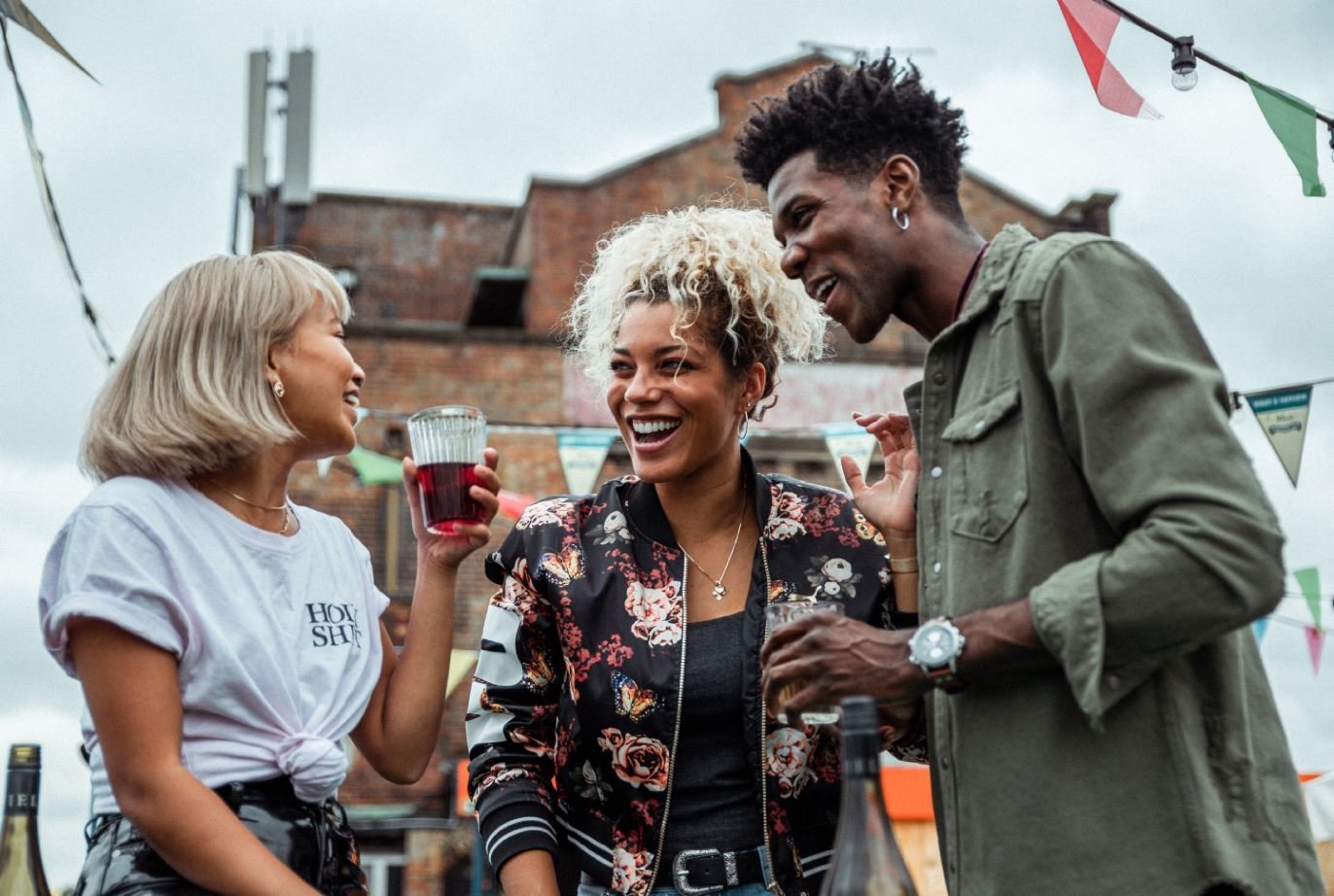Clinical Aromascience Practitioner Gillian Parkinson debunks some myths around essential oils and highlights the importance of education and correct and safe use for achieving their vast benefits.
There has been a resurgence in the domestic use of essential oils. Can you explain why?
There are a few reasons, one is that there is so much more scientific research and authentic case studies being published which are showing real benefits, effectiveness and successful results around the safe and effective use of essential oils.
Also, we are learning more and more about the negative effects of synthetic chemicals (essential oils are natural chemicals) and people are far more willing to try a natural alternative.
The worrying reason is they have become ‘trendy’ and when we see these trends, everyone wants to jump on the band wagon, from corporates adding them to washing powders (even if they are in the smallest of amounts and have little to no effect), unqualified resellers are having home parties, they’re popping up at local markets, trade shows… This is concerning due to the lack of professional education and potentially dangerous advice and certified training involved, in the safe and effective use of essential oils.
Why do you have to be careful when using essential oils?
An essential oil is a concentrated volatile liquid extracted from plants – it is the chemical from the plant. Each essential oil has hundreds of chemical constituents and it’s that chemical makeup that tells us the expected therapeutic nature of the oil.
Essential oils can be incredibly effective (if used safely) but must be highly respected as they are still a concentrated form of a chemical (despite being natural).
It has been scientifically proven (by Dr Steve Humphries, Hebe Botanicals, lecturer at Massey University, NZ) that once applied topically, the properties of essential oils will be in your blood stream within two minutes and in your central nervous system within 15. They enter our hair follicles and pores. Essential oils have a cumulative effect, which, for when treating a non-life threatening medical condition, this is extremely useful for when the condition is chronic (long term).
Incorrect use can cause irritation or an allergic reaction and in some, a permanent sensitivity to a certain essential oil if using it undiluted over a period of time. Taking essential oils internally can cause damage to the inside of the mouth, throat and more.

What are the dangers or pitfalls?
Unfortunately a couple of trends have emerged which are potentially dangerous and these are ingesting essential oils and using neat on the skin. No professional qualified essential oil practitioner in New Zealand (Aromatherapist, Aromatologist, Aromascience Practitioner) will prescribe or encourage using essential oils by these methods.
What are your top pieces of advising for using essential oils?
Do not ingest essential oils Many professional aromatherapy associations do not endorse the internal ingestion of essential oils, unless the aromatherapist has suitable training. Also, please bear in mind, oil and water do not mix, so when you ingest essential oils in a glass of water, the oils are not emulsified, and the risks are huge in that your throat, oesophagus and stomach can be potentially burned by the essential oils. And if you are doing this even once a day, the effects can get worse and the cumulative effect can have a negative reaction on internal organs. such as the kidney and liver, gall bladder and more.
Many essential oils can be toxic if ingested, even in moderate doses. Never ingest or use undiluted essential oils (neat) on the skin, for any ‘therapeutic’ purposes. If an oil is ingested by accident, drink fatty milk and seek advice, do not drink water nor induce vomiting.
Do not use neat on the skin, this is at ALL ages There are a very small handful of exceptions to this rule including lavender, species lavendula angustifolia and tea tree which can be occasionally applied neat, or directly, to the skin. Essential oils are incredibly potent and need to be dispersed into a carrier before applying them to the skin. Less is more in the world of essential oils. There is no need to over use and it is always better to be safe than sorry.
Dilute your essential oils All professional essential oil practitioners, as well as aromatherapy organisations recommend that consumers dilute essential oils. This practice will decrease your risk of sensitisation, irritation, inflammation and adverse skin reactions.
Seek qualified, experienced aromatherapists Another danger is purchasing essential oils and receiving advice from unqualified resellers. There is so much misinformation out there that you shouldn’t rely on Google searches and the like as reputable sources of information.
Be sure you are buying 100 per cent pure and unadulterated essential oils
Adulterated essential oils may contain undisclosed fillers, stretchers, fragrance enhancers and/or synthetic chemicals. The code of ethics in New Zealand is that all single (only one essential oil in the bottle) essential oil labelling should state the content is pure essential oil and the botanical name ie: German Chamomile matricaria chamomile.
Pure essential oils (and blended essential oil products) should always be stored in dark glass bottles, this protects the contents from being oxidised from heat or light, therefore protecting the life and therapeutic benefits.
Never purchase essential oils or blended essential oil products that are stored in plastic container. Heat, light, oxygen, moisture, are all factors that can affect the expiration date of your oil if stored in plastic. Always store essential oils away from heat & direct sunlight – under 30ºC, pop your essential oils and essential oil blended products in the fridge if necessary.
Shop around, do your homework, ask questions and if you are unsure, seek advice from a qualified essential oil professional. There is so much to learn about essential oils, the chemistry, the botanical species and the species differences, the notes, the properties, contraindications and so much more.
For example, there are multiple botanical species and chemical constituents with lavender and eucalyptus plants. They have similarities but some species are safer to use than others – which is why it’s vital to be educated, especially in the case of using them on babies and children and also for different health conditions.
One species of Eucalyptus (eucalyptus polybractea) is so strong that you can get tar off concrete with it, so you would never use it in aromatherapy. Then there is the species Eucalyptus Smithii or Gully Gum as it’s also known, this is so gentle it can be used at all ages, even on babies (if diluted correctly).
Another example is Lavendula Angustifolia, which is fantastic to apply directly on a burn due to its analgesic, anti-inflammatory, cell regenerating, antiseptic properties. Then there is Lavendula spica which is high in cineole which means it’s great for colds, flus, respiratory complaints but always must diluted for use on the skin for wound healing.
How do you use essential oils safely?
Topically (applied to the skin)
Essential oils must always be diluted in a plant based carrier oil (when applying to the skin) such as extra virgin olive oil, grapeseed, apricot kernel etc. For babies and children the dilution must be very low (1-3 drops per 10mls of carrier oil, up to 6 drops for children 2-6 years old).
There is a limit to what essential oils are safe to use on babies and children – here is a list of essential oils I use in my blends & synergies for children under the age of 6 years:
Cypress, Frankincense, Geranium, Ginger, Eucalytpus Smithii,Eucalyptus Globulus, Lavender (lavendula angustifolia), Sweet Marjoram, Rosemary, Rose Otto, Rosewood, Sandalwood, Tea Tree, Thyme (sweet), Ylang Ylang, Bergamot, Lemon, Mandarin, Orange.
From 6 years to 15 years, 4-9 drops in 10mls of carrier oil, age 15+, 9 to 15 drops. The exact amount of drops depends on what is being treated. For simple conditions such as rejuvenating skin, gentle massage, go for the lower amounts. Any health conditions such as eczema, psoriasis and other skin conditions, depression, anxiety and other stress conditions, pain and injuries, child birth, any pregnancy blends and other non-life threatening health condition, it is in your best interests to seek advice from a qualified essential oil professional.
Inhalation methods
There are many very effective methods of inhalation of essential oils, such as a combination of a topical blend (a blend diluted in a carrier oil and applied to the skin) used daily as well as the appropriate essential oil synergy (undiluted blended essential oils) used in a vaporiser. You can also add drops to a tissue to be worn for the day (read further on this wonderful method here), or practice inhaling the essential oils deeply straight from the bottle. Vaporisers are wonderful but don’t rely on them alone, to assist in relieving acute or chronic conditions (such as depression & anxiety conditions, insomnia etc).
These methods should only be used for up to three hours maximum when treating babies and children, up to five hours for adults.
Drops on a tissue – 1-2 drops for babies and children, 6-8 for adults. Placed next to the pillow (or under the cot sheet around 20cm from child’s head would usually be) is a lovely way to receive the therapeutic benefits of essential oils while sleeping. Additionally, for adults, folding the tissue so the essential oils won’t be touching the skin, popping the tissue inside your top or bra and wearing it for the day is another wonderful way of receiving the therapeutic benefits. This method is particularly good for sleep/anxiety for all ages.
Steam Inhalations Not suitable for children, fantastic for adults especially when you have a cold, flu, headaches, migraines or any respiratory conditions. Simply add 6-8 drops, in total, of the appropriate essential oils to a bowl of very hot (not boiling) water, place a towel over your head, close eyes and inhale deeply through your nose. Do this for as long as you can, for up to five minutes.
In the bath Add the drops to 5mls of a plant based carrier oil to emulsify, then add this to the bath – soak for a good 10 minutes to enjoy the therapeutic benefits of the essential oils.
Gillian Parkinson is a Clinical Aromascience Practitioner and has a practice in Roxburgh, Central Otago where she sees clients on a consultation basis. Le’Esscience Ltd, her company, was formed in 2009. Her services include therapeutic Aromatherapy massage and she prepares essential oil complimentary health products using pure high-quality essential oils, and carrier oils. For more visit leesscience.co.nz





